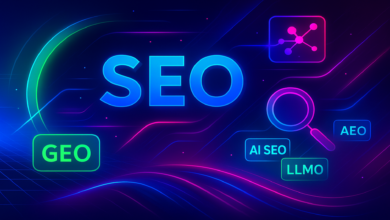Beyond E-E-A-T: Branding, Survival, and SEO’s Future

▼ Summary
– Strong brand identity is crucial for connecting with online audiences and is increasingly important in marketing strategies.
– Authenticity in branding builds trust with users and AI systems, moving beyond algorithm-focused acronyms like E-E-A-T.
– Cross-functional collaboration is essential for consistent brand messaging and organizational health, as siloed teams create confusion.
– Clear vision and meaningful goals from leadership are needed to align teams and prevent fractured brand presentations.
– Effective, fluid communication between teams is necessary to adapt to fast-moving SEO changes and maintain brand coherence.
In today’s digital environment, branding has become absolutely essential for survival and success. The connection between authentic brand identity and search performance grows stronger as audiences seek genuine relationships with companies they trust. A recent discussion between Search Engine Journal’s Editor-in-Chief Katie Morton and Mordy Oberstein of Unify Brand Marketing reveals why moving beyond technical SEO acronyms toward human-centered branding represents the future of digital marketing.
The conversation centers around findings from Search Engine Journal’s annual State of SEO survey, which this year carries the telling subtitle “How to Survive.” Survey data reveals that 34.8% of marketers reported improved brand visibility as their most significant outcome, indicating a clear shift toward brand-focused strategies. This aligns with insights from industry expert John Shehata, who emphasizes that “authenticity builds trust, both with users and AI systems” and represents the crucial first “E” (Experience) in Google’s E-E-A-T framework.
Oberstein argues that while E-E-A-T provides valuable guidance, focusing too heavily on the acronym can hinder authentic brand development. “When you’re trying to build authenticity, that’s not really the context you’re working in,” he explains. True authenticity emerges from deeply understanding your brand identity and making decisions that align with your core values, rather than simply checking algorithmic boxes. This human-centered approach naturally translates into search equity because it creates content that genuinely resonates with people.
The discussion highlights another critical finding from the survey: 37.7% of organizations reported increased cross-functional collaboration. This development proves vital because siloed teams inevitably create inconsistent brand messaging. When different departments interpret brand identity differently, the result is a fractured presentation that confuses both human audiences and algorithmic systems. Oberstein identifies the root cause as typically stemming from unclear vision and meaning from leadership. “People aren’t machines,” he notes. “They need something meaningful to attach to, just like your audience needs something meaningful in order to perceive you, connect with you, and resonate with you.”
The rapid pace of SEO changes presents additional challenges for maintaining brand consistency. Different teams may interpret emerging trends differently, leading to mixed messaging before anyone recognizes the disconnect. Morton observes that “SEO and marketing can be as much art as science,” requiring testing and adaptation over time. In this environment, traditional monthly syncs between teams often prove insufficient. Instead, organizations need fluid, ongoing communication through platforms like Slack or brief daily check-ins that keep everyone aligned.
Both experts emphasize that breaking down departmental silos represents a crucial step toward building authentic brands that perform well in search. This requires clear vision from leadership that goes beyond mere metrics to articulate meaningful purpose that teams can genuinely embrace. As organizations navigate an increasingly complex digital landscape, those who successfully integrate authentic branding with collaborative operations will not only survive but thrive.
(Source: Search Engine Journal)





